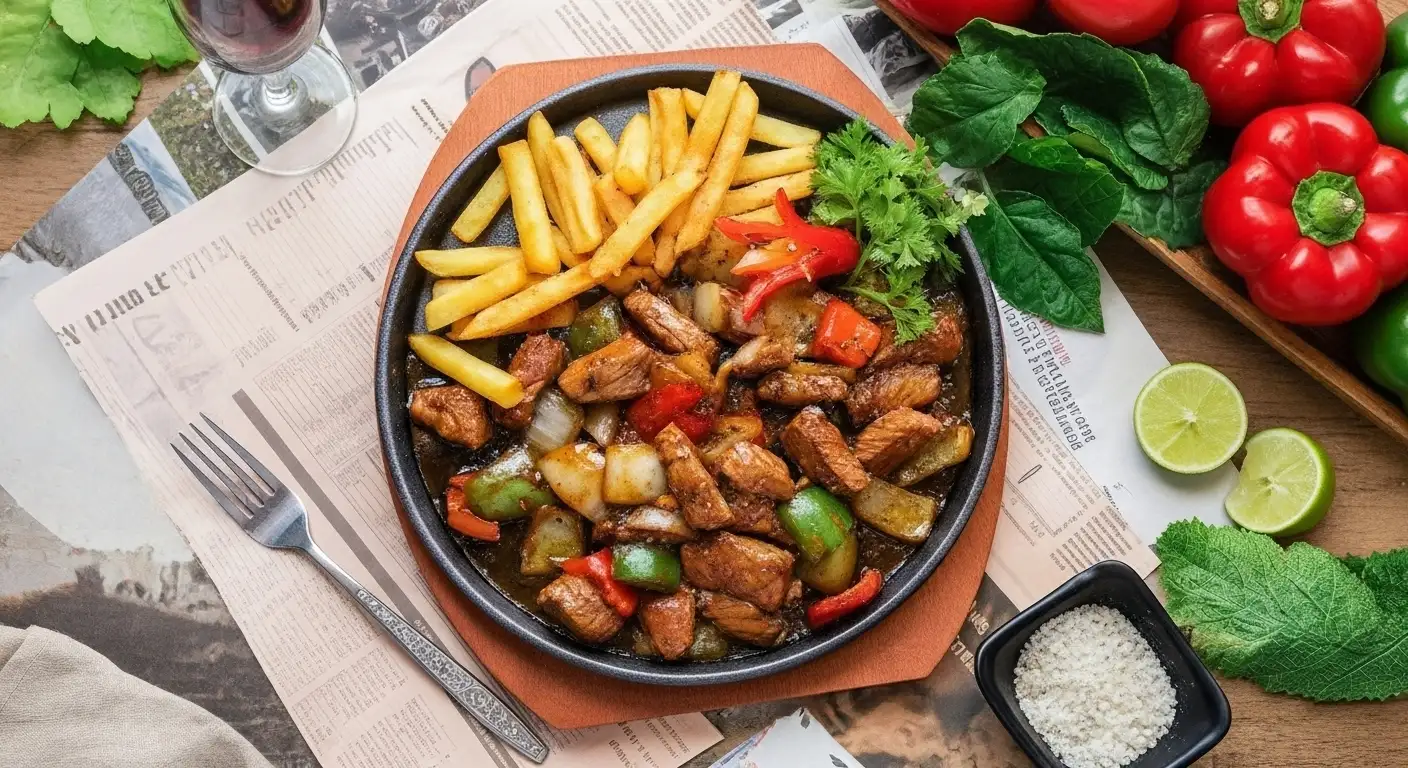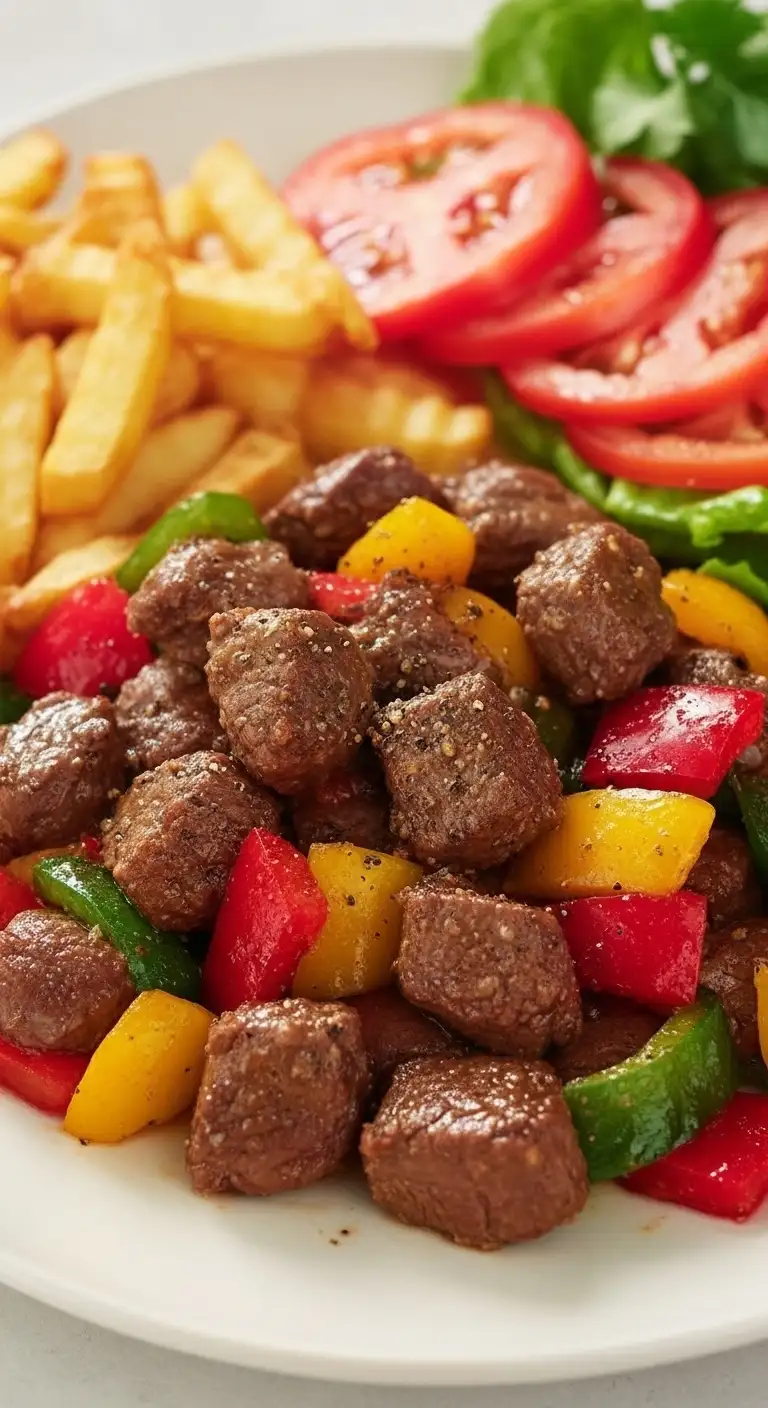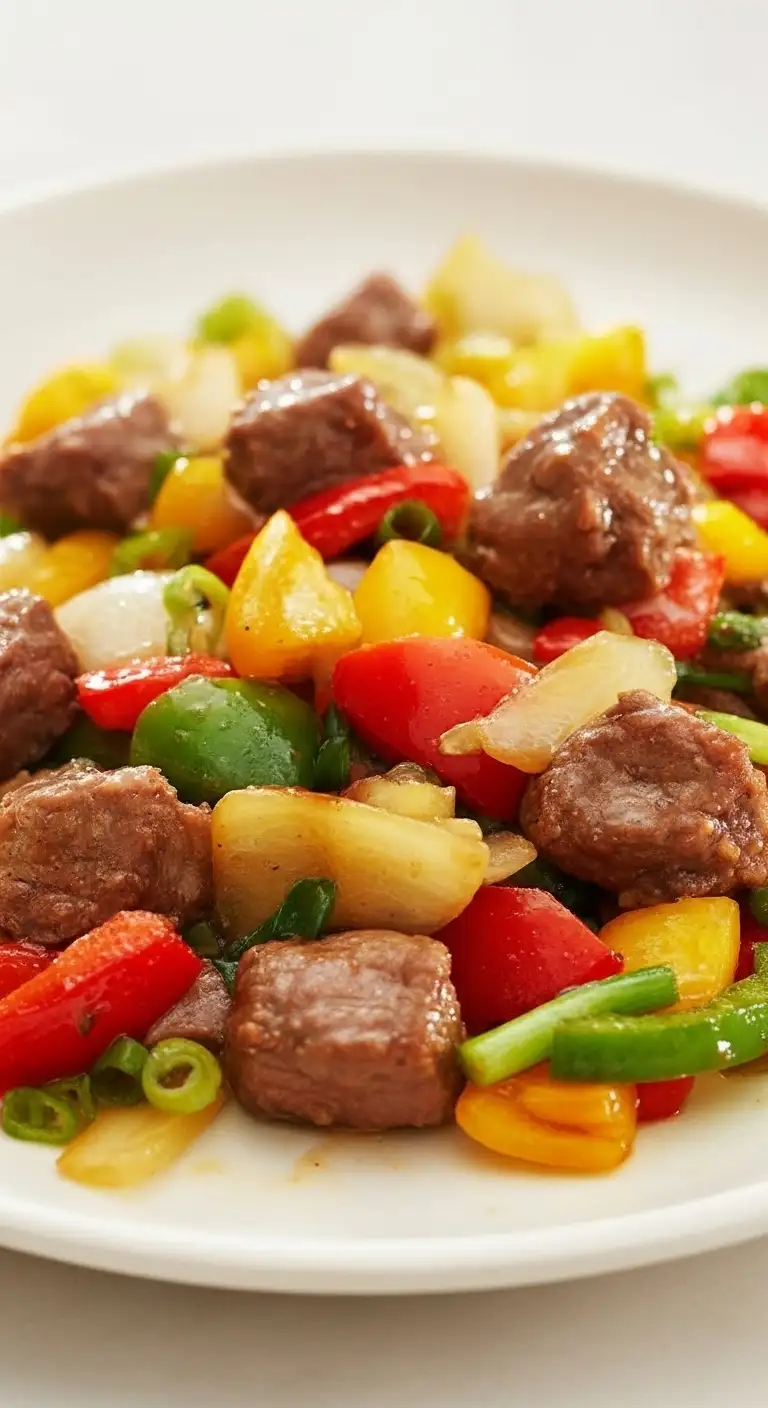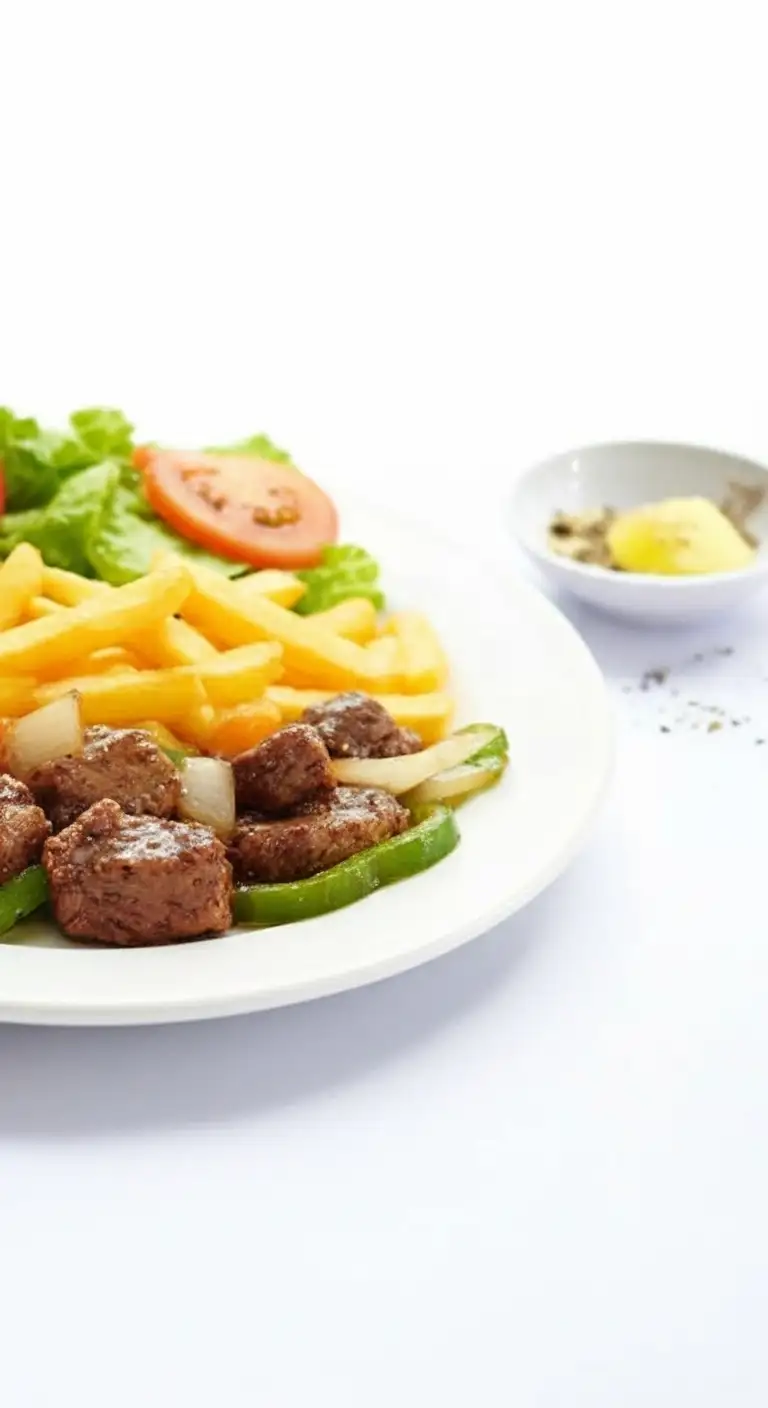Bò Lúc Lắc (pronounced “Baw Look Lack”) is a popular Vietnamese dish consisting of cubes of marinated beef, quickly stir-fried and served over a bed of fresh greens. The name itself, “Lúc Lắc,” is onomatopoeic, referring to the act of vigorously shaking the wok or pan during the cooking process to ensure the beef is evenly seared and caramelized.
This dish is a testament to the intersection of East and West, combining French culinary techniques (using high-quality beef and butter) with the bold, savory flavors of Vietnamese seasonings. It is a favorite main course served everywhere, from casual family dinners to festive celebrations.
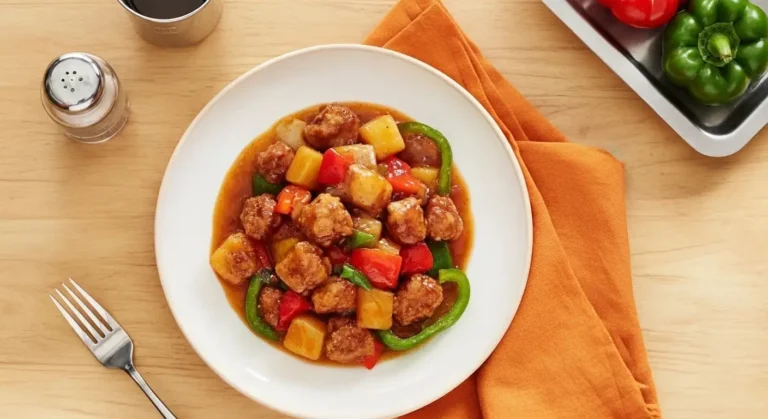
Bò Lúc Lắc: The Basics
The Beef: Traditionally, tender cuts like filet mignon, sirloin, or ribeye are cut into uniform, bite-sized cubes (about 1 inch).
The Marinade: The beef is marinated in a highly savory, umami-rich mixture, which typically includes:
Oyster Sauce
Soy Sauce
Fish Sauce (sometimes)
Garlic
Sugar and Black Pepper
The Cooking Technique (The “Shake”): The cubed beef is seared in a very hot wok with butter and a touch of oil. The continuous “shaking” or tossing ensures the outside of the cubes gets a beautiful, caramelized crust while the inside remains tender and juicy (often cooked to medium-rare). Sliced onions are added near the end to slightly wilt and soak up the pan juices.
The Finish: A crucial component is the finishing touch of butter added right at the end to give the beef a rich, glossy sheen and a decadent aroma.
Variations and Accompaniments of Bò Lúc Lắc
While the core recipe of diced, shaken beef remains consistent, the dish is typically classified based on its accompaniment.
| Vietnamese Name | Translation / Serving Style | Key Accompaniment |
|---|---|---|
| Bò Lúc Lắc (Classic) | Shaking Beef | Served atop a bed of crisp greens, usually watercress or lettuce, sliced tomatoes, and onions. The freshness cuts the richness of the beef. |
| Bò Lúc Lắc Cơm Đỏ | Shaking Beef with Red Rice | The most popular restaurant style. Served with a portion of Red Rice (Cơm Đỏ), which is white rice cooked or stir-fried with tomato paste, butter, and sometimes stock, giving it a pink-red color and rich flavor. |
| Bò Lúc Lắc Khoai Tây | Shaking Beef with Fries | A simple, highly satisfying version, often served with French fries (Khoai Tây Chiên) instead of rice, reflecting its Western culinary influence. |
| Bò Lúc Lắc Xà Lách | Shaking Beef Salad | Served as a more generous salad, often featuring a vinaigrette dressing on the greens, with the warm beef cubes tossed on top. |
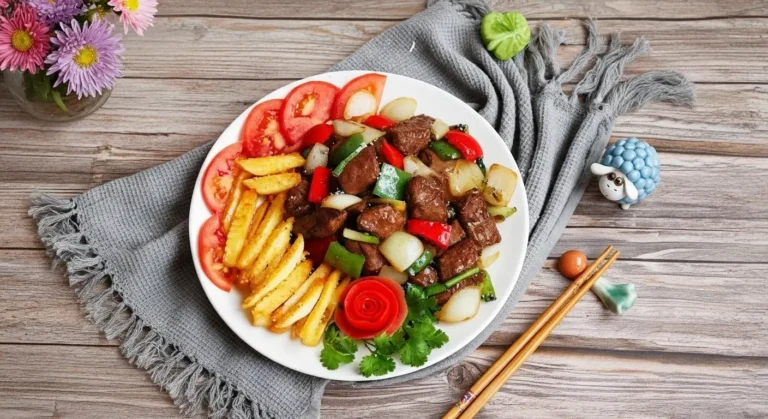
How to Eat Bò Lúc Lắc
Bò Lúc Lắc is typically a main course, eaten with a combination of utensils and special condiments.
The Dipping Sauce: This is arguably as important as the beef itself. The dish is always served with a small dipping sauce called Muối Tiêu Chanh (Salt-Pepper-Lime). This simple but potent mix of salt, freshly ground black pepper, and fresh lime juice is used to dip the beef cubes and is key to brightening the dish’s rich, savory flavor.
Mixing the Salad: If served on a bed of greens, the salad and the beef are usually mixed together on the plate before eating. The residual heat from the beef and the savory pan juices slightly wilt the greens, while the raw vegetables add a necessary crunch and coolness.
Utensils: It is typically eaten with chopsticks and a spoon (especially when served with rice), allowing the diner to easily pick up the meat cubes and scoop the rice and the savory juices.
Regional Differences
Bò Lúc Lắc is a relatively modern and upscale dish by Vietnamese standards, so its differences across the regions are less pronounced than with traditional dishes like Phở or Xôi. However, the seasoning and serving preferences still align with the general regional palate.
| Region | Flavor Profile & Serving Style | Key Differences |
|---|---|---|
| Southern Vietnam (Ho Chi Minh City) | Sweet and Rich. This dish is most strongly associated with Southern cuisine due to its French-influenced and richer profile. | The marinade and pan sauce often contain a slightly more generous amount of sugar to appeal to the Southern sweet tooth. It is almost always served with the classic Red Rice (Cơm Đỏ) or a rich mayonnaise/dressing on the side of the greens. |
| Central Vietnam (Huế/Đà Nẵng) | Savory and Spiced. Follows the central region's preference for bold, highly seasoned food. | The beef marinade and the dipping sauce (Muối Tiêu Chanh) are likely to be saltier and may include a dash of chili or chili oil, reflecting the Central region's love for heat and intense seasoning. Portions can sometimes be slightly smaller, in the style of royal cuisine. |
| Northern Vietnam (Hanoi) | Subtle and Balanced. The Northern version (Bò Sốt Vang or sometimes Bò Lúc Lắc) maintains a milder, more delicate flavor. | Less emphasis on sugar and heavy sauces like oyster sauce, with a greater focus on the quality of the beef and the pure flavor of salt and pepper. It is most often served with plain white rice or a simple garden salad, keeping the flavor profile cleaner and less rich than the Southern counterpart. |
